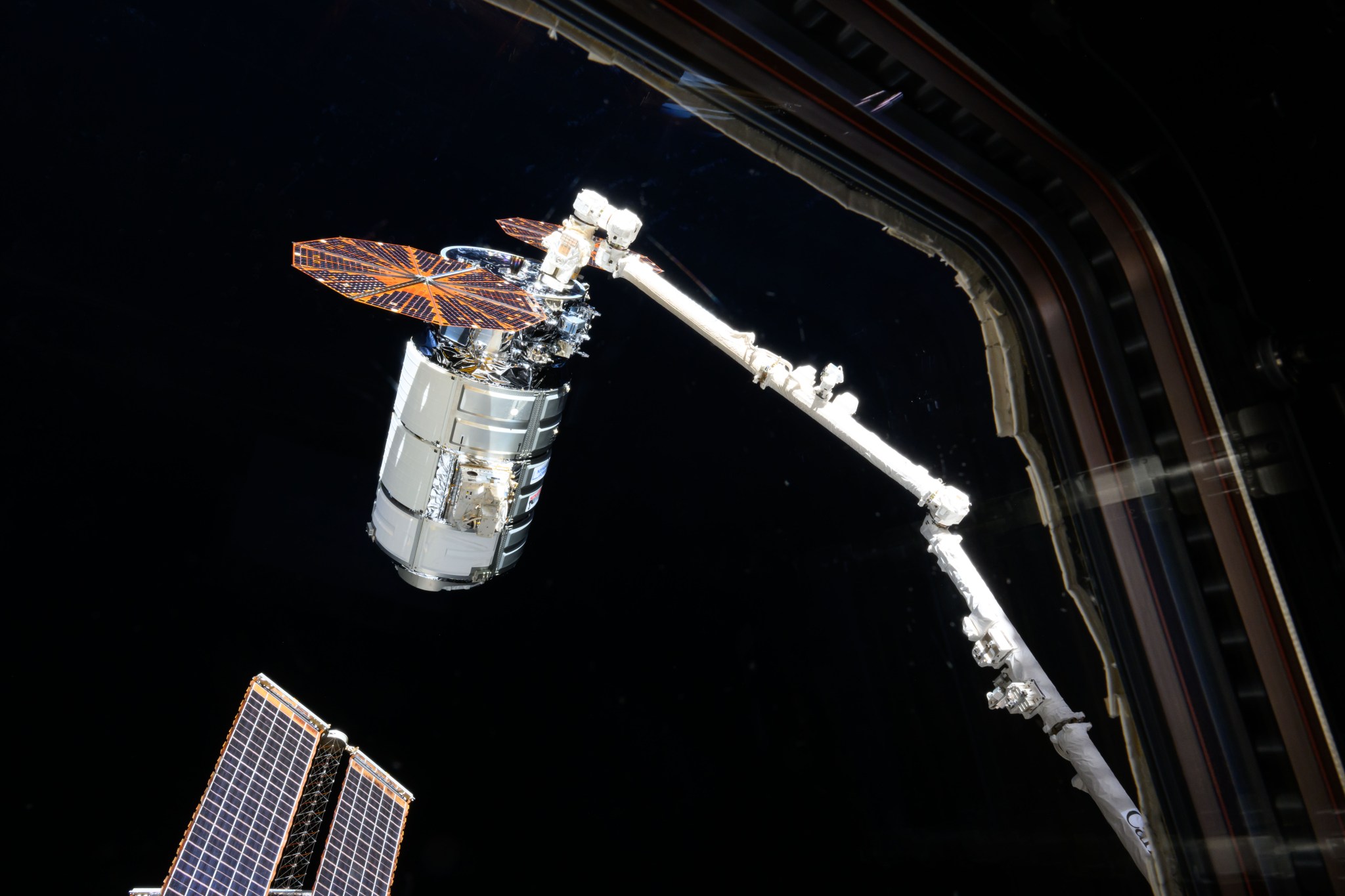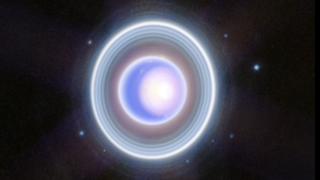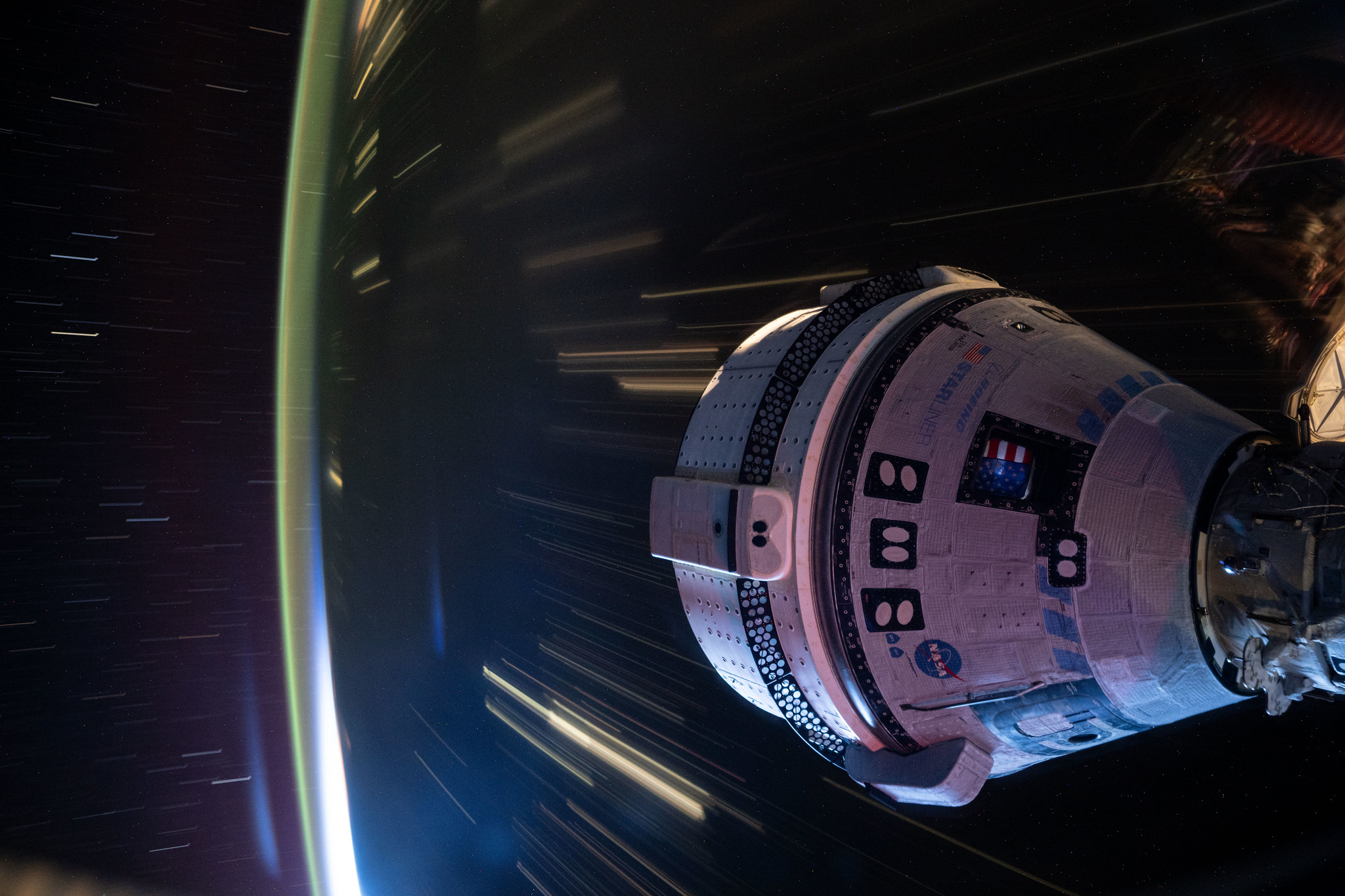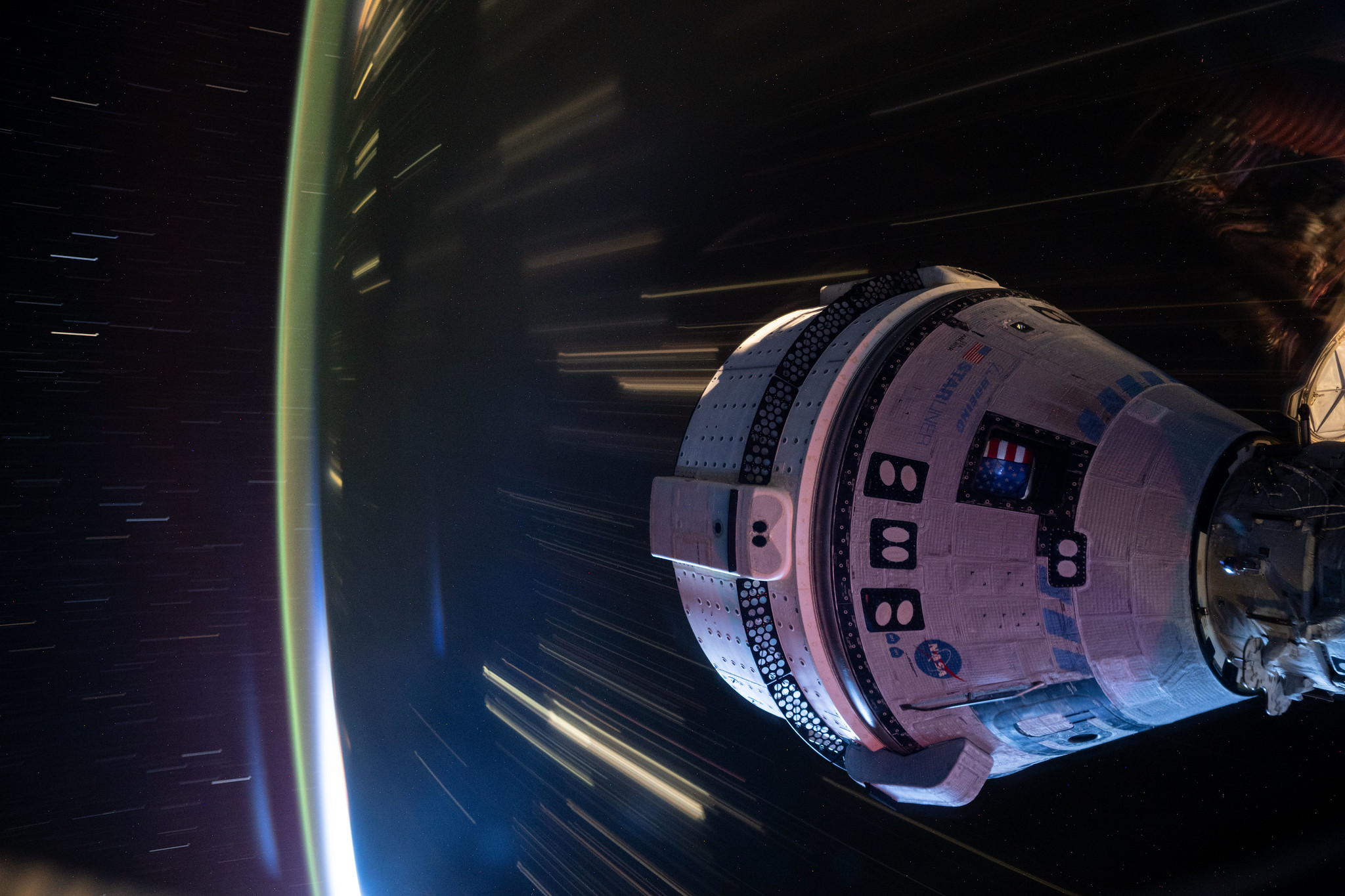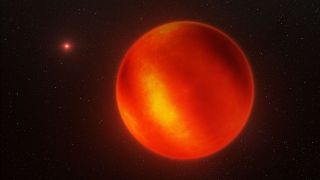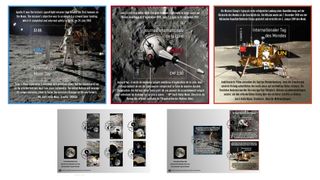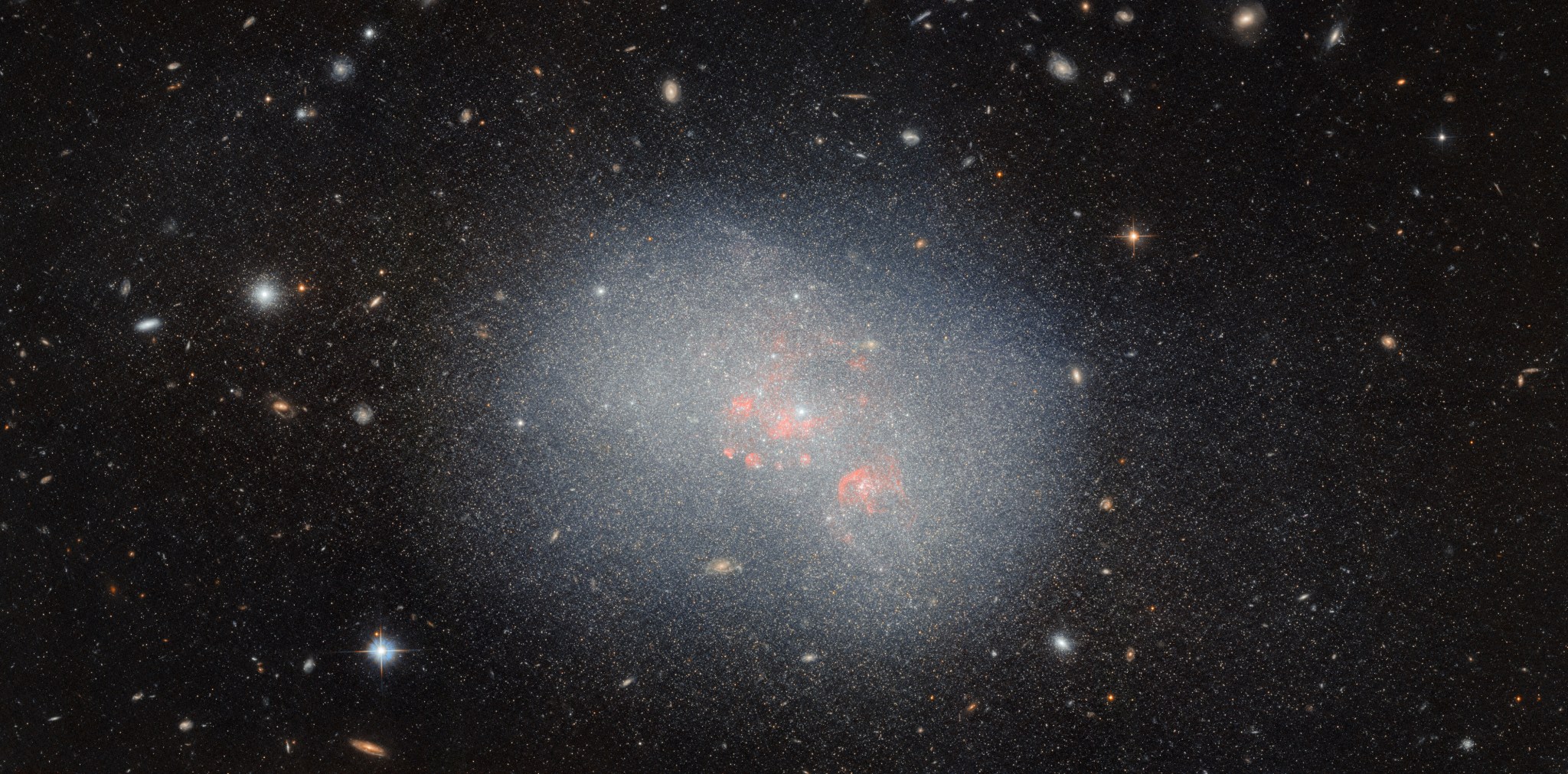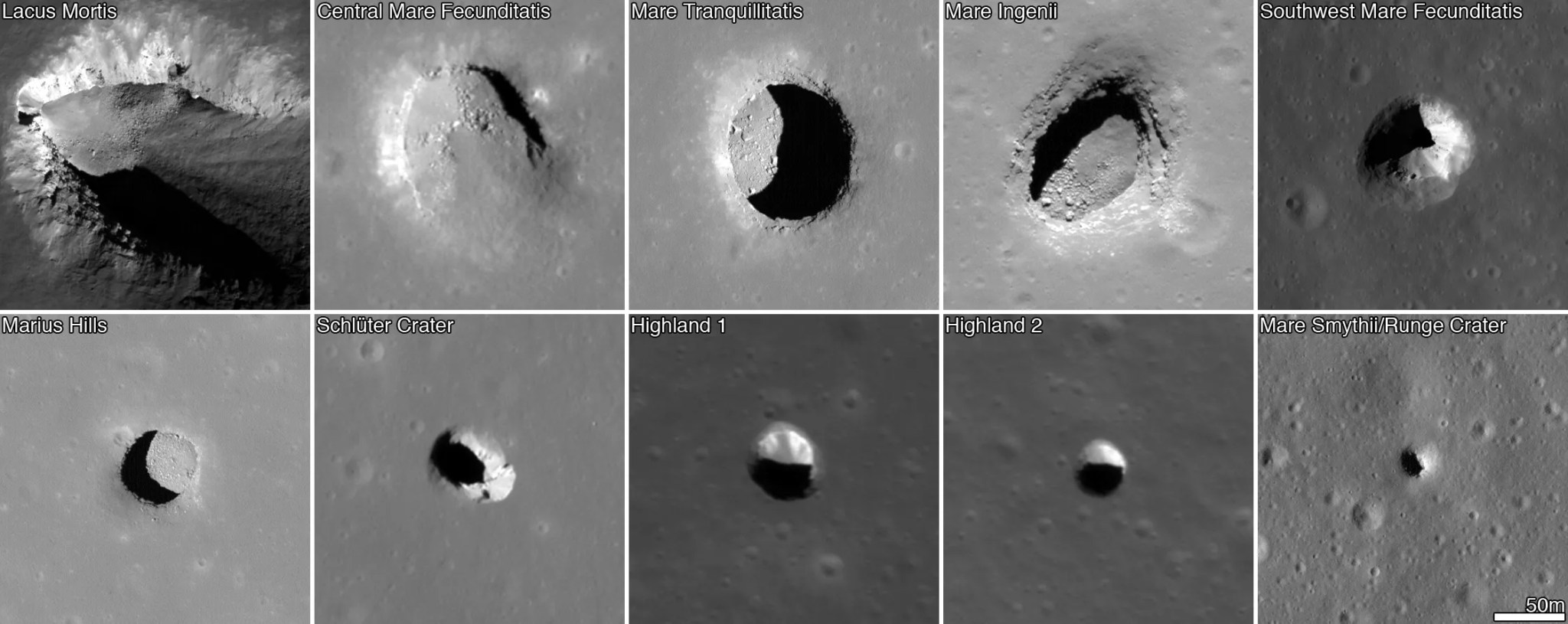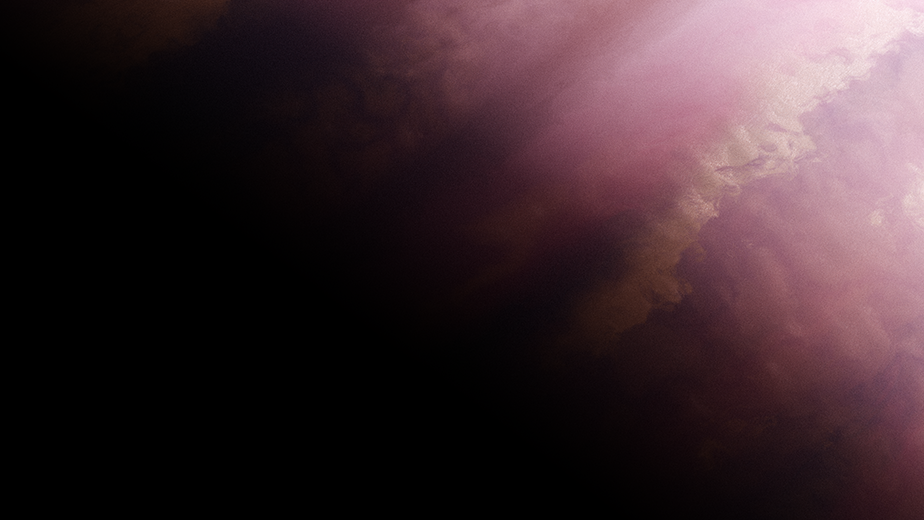Northrop Grumman’s Cygnus space freighter is pictured attached to the Canadarm2 robotic arm ahead of its release from the International Space Station’s Unity module on Tuesday, July 12, 2024. Photo credit: NASA NASA invites the public to participate in virtual activities ahead of the launch of Northrop Grumman’s 21st commercial resupply services mission for the agency. Mission teams are targeting 11:28 a.m. EDT Saturday, Aug. 3, for the launch of the company’s Cygnus cargo spacecraft on a SpaceX Falcon 9 rocket from Space Launch Complex 40 at Cape Canaveral Space…
Read MoreTag: Missions
A moon of Uranus could have a hidden ocean, James Webb Space Telescope finds
Using the James Webb Space Telescope (JWST), astronomers discovered that Ariel, a moon of Uranus, could be hiding in a buried liquid water ocean. The discovery could supply an answer to a mystery surrounding this Uranian moon that has perplexed scientists: the fact Ariel’s surface is covered with a significant amount of carbon dioxide ice. This is puzzling because at the distance Uranus and its moons exist from the sun, 20 times further out from the sun than Earth, carbon dioxide turns to gas and is lost to space. This…
Read MoreUPDATE: NASA, Boeing to Stream Flight Test Mission Briefing on NASA+
Boeing’s Starliner spacecraft that launched NASA’s Crew Flight Test astronauts Butch Wilmore and Suni Williams to the International Space Station is pictured docked to the Harmony module’s forward port. This long-duration photograph was taken at night from the orbital complex as it soared 258 miles above western China. NASA and Boeing will host a news conference with mission leadership at 11:30 a.m. EDT Thursday, July 25, to provide the latest status of the agency’s Boeing Crew Flight Test aboard the International Space Station. NASA previously planned an audio-only media teleconference…
Read MoreNASA, Boeing to Discuss Crew Flight Test Mission, Ground Testing
Boeing’s Starliner spacecraft that launched NASA’s Crew Flight Test astronauts Butch Wilmore and Suni Williams to the International Space Station is pictured docked to the Harmony module’s forward port. This long-duration photograph was taken at night from the orbital complex as it soared 258 miles above western China. Leadership from NASA and Boeing will participate in a media teleconference at 11:30 a.m. EDT Thursday, July 25, to provide the latest status of the agency’s Boeing Crew Flight Test mission aboard the International Space Station. Audio of the media teleconference will…
Read MoreAlien weather report: James Webb Space Telescope detects hot, sandy wind on 2 brown dwarfs
The James Webb Space Telescope (JWST) has discovered stormy weather in the sky of two brown dwarfs in the most detailed weather report yet from such “failed stars.” The two brown dwarfs form a binary pair called WISE 1049AB that was discovered by NASA‘s Wide-field Infrared Survey Explorer (WISE) in 2013; the duo sits just 6.5 light-years away from us. They are the closest brown dwarfs to our sun, and thus make an excellent target for the James Webb Space Telescope‘s powerful infrared instruments. A brown dwarf is an object…
Read MoreUnited Nations marks Apollo 11 55th with international moon missions stamps
Photos of the moon captured by American, Russian, European, Japanese, Indian, Korean and Chinese spacecraft are the subject of new United Nations (UN) postage stamps commemorating the 55th anniversary of the NASA‘s Apollo 11 lunar landing mission. The UN Postal Administration (UNPA) will release six se-tenant postage stamps and three souvenir sheets on Saturday (July 20) to celebrate International Moon Day. Since 2021, the UN has recognized the day that astronauts Neil Armstrong and Buzz Aldrin walked on the moon “to raise awareness about the commitment to sustainable lunar exploration…
Read MoreWhat became of the flags Apollo astronauts left on the moon?
55 years ago today, Apollo 11’s flag raising on the ancient lunar surface took all of 10 minutes during Neil Armstrong’s and Buzz Aldrin’s two-and-a-half hour moonwalking adventure in July 1969. But that seminal event in vexillological history was not without a lot of debate, discussion and early worries that were run up the policy flagpole about “who owns the moon?” (Vexillology is the study of the history, symbolism and usage of flags.) Matthew Ward is a senior lecturer in history at the University of Dundee in Scotland. He notes…
Read MoreHubble Studies a Potential Galactic Merger
3 min read Hubble Studies a Potential Galactic Merger This NASA/ESA Hubble Space Telescope image captures the dwarf irregular galaxy NGC 5238. ESA/Hubble & NASA, F. Annibali This NASA/ESA Hubble Space Telescope image features the dwarf irregular galaxy NGC 5238, located 14.5 million light-years from Earth in the constellation Canes Venatici. Its unexciting, blob-like appearance seems to resemble an oversized star cluster more than a classic image of a galaxy. Its lackluster appearance belies its complicated structure, which is the subject of a great deal of research. As the image…
Read MoreNew Evidence Adds to Findings Hinting at Network of Caves on Moon
These images from NASA’s LRO spacecraft show a collection of pits detected on the Moon. Each image covers an area about 728 feet wide. An international team of scientists using data from NASA’s LRO (Lunar Reconnaissance Orbiter) has discovered evidence of caves beneath the Moon’s surface. In re-analyzing radar data collected by LRO’s Mini-RF (Miniature Radio-Frequency) instrument in 2010, the team found evidence of a cave extending more than 200 feet from the base of a pit. The pit is located 230 miles northeast of the first human landing site on…
Read MoreThe James Webb Space Telescope is studying an exoplanet’s eternal day — and eternal night
What’s the James Webb Space Telescope’s favorite movie? Eternal sunshine of the exoplanet WASP-39 b, perhaps. In a new study, data from the James Webb Space Telescope reveals details of this mysterious gas giant exoplanet, which orbits a star about 700 light-years away from Earth. WASP-39 b is tidally locked to that star, which means the same side of the planet always faces its star. In other words, half of the planet experiences perpetual day, and the other experiences perpetual night. But the dividing line isn’t black and white — there’s a…
Read More